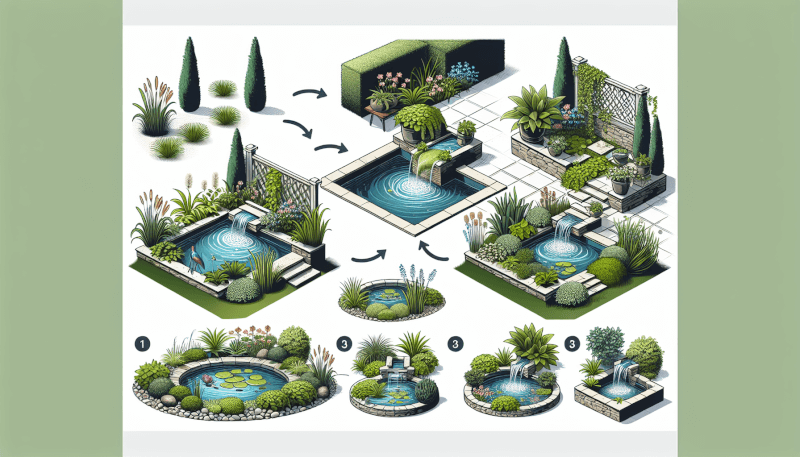Transform your backyard into a peaceful and serene oasis with these amazing DIY garden pond ideas. From small water features to large ponds, there is a variety of options to suit every space and budget. By creating your very own garden pond, you can enjoy the soothing sound of trickling water, watch colorful fish swim gracefully, and attract beautiful wildlife to your outdoor sanctuary. Whether you’re a seasoned DIY enthusiast or just starting out, these ideas will inspire you to create a tranquil paradise in your own backyard. So, roll up your sleeves, grab your tools, and let’s get started on this exciting journey to transform your outdoor space into a relaxing haven. When it comes to creating a peaceful and serene atmosphere in your garden, a pond can be the perfect addition. Not only does it offer a beautiful focal point, but it also provides a habitat for aquatic life and brings a sense of tranquility to the space. If you’re thinking about building your own garden pond, there are a few key factors to consider to ensure its success. In this article, we will guide you through the process, from choosing the right location to maintaining your pond for years to come.
Choosing the Right Location
The first step in creating your garden pond is selecting the perfect location. One of the most important factors to consider is the sunlight exposure. Most aquatic plants require at least six hours of sunlight each day, so choose a spot that receives ample sunlight. Additionally, you’ll want to check for access to electricity. This is essential if you plan on incorporating features such as a fountain or lighting. Lastly, it’s crucial to evaluate the terrain. Level ground is ideal for pond installation, as it ensures proper water distribution and prevents any potential issues in the future.
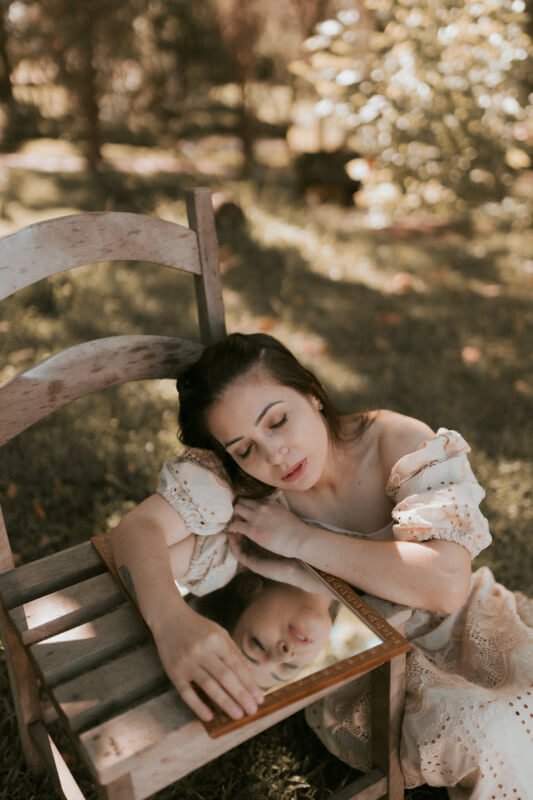
Consider the Sunlight Exposure
Sunlight is key for the health and vitality of your pond. When choosing the location for your garden pond, select an area that receives a good amount of sunlight. Six hours of direct sunlight each day is recommended for most aquatic plants, ensuring they can photosynthesize and thrive. Avoid areas that are heavily shaded by trees or buildings, as this can inhibit plant growth and lead to water quality issues. By choosing a spot with adequate sunlight exposure, you’ll be setting your pond up for success.
Check for Access to Electricity
Incorporating electrical features such as a fountain or lighting can truly elevate the ambiance of your garden pond. Before finalizing your pond’s location, ensure that there is easy access to electricity in the area. This will make it convenient for you to power any desired features and create a stunning visual display. Be sure to consult with a professional electrician if you’re unsure about the required electrical work. With access to electricity, you’ll have the freedom to add beautiful and eye-catching elements to your garden pond.
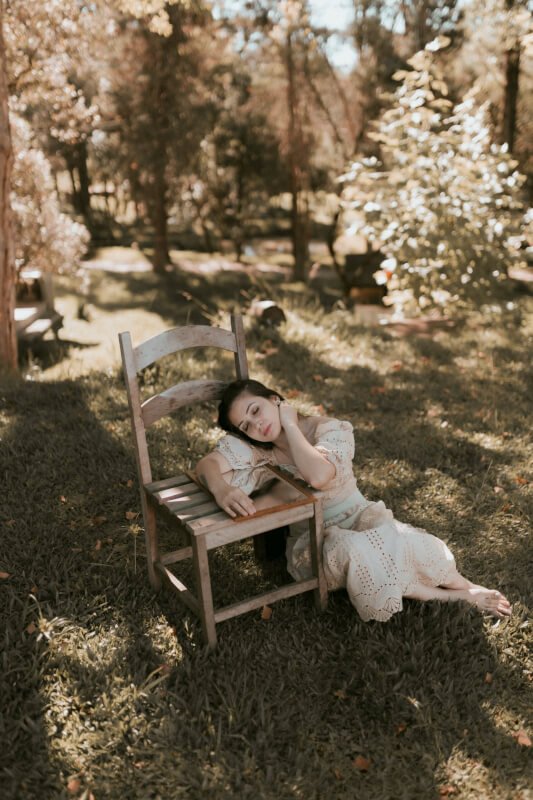
Evaluate the Terrain
The terrain of your chosen location is another critical factor to consider. Building a pond on level ground is essential to ensure proper water distribution and prevent any potential issues in the future. Uneven ground can lead to problems with water flow, which may result in stagnant areas or water runoff. Additionally, a flat surface will make it easier for you to install the pond liner and maintain the overall stability of the pond. Take the time to evaluate the terrain and choose a location that provides a solid foundation for your garden pond.
Determining the Size and Shape
Once you have chosen the perfect location for your garden pond, it’s time to determine the size and shape that best suits your space. There are several factors to consider when making these decisions, including the available space, liner options, and desired depth.
Consider Available Space
The available space in your garden will ultimately dictate the size of your pond. Take accurate measurements of the area and consider the overall layout of your garden. You’ll want to ensure that the pond fits seamlessly into the surroundings without overwhelming the space. Keep in mind that a larger pond will require more maintenance and may necessitate additional equipment, so consider your capabilities and resources before determining the size.

Choose Between Pre-Formed or Flexible Liner
When it comes to pond liners, there are two main options: pre-formed or flexible liners. Pre-formed liners come in a variety of shapes and sizes and are ready to be installed directly into the ground. They offer convenience and simplicity, but their shape is predetermined, limiting your design options. On the other hand, flexible liners, such as EPDM or PVC liners, allow for more freedom in shaping your pond. They can be cut and adjusted to fit any size or design, giving you the flexibility to create a pond that suits your vision.
Decide on the Desired Depth
The depth of your pond is an important consideration that will impact the overall ecosystem and the types of plants and wildlife you can include. A depth of at least two feet is recommended for the overall health and stability of the pond. This depth provides a sufficient volume of water for aquatic life to thrive while also preventing the water from overheating. Additionally, a deeper pond will be more resistant to evaporation and will require less frequent refilling. Consider your goals and preferences when deciding on the depth of your garden pond.
Creating a Natural Ecosystem
Designing your pond to mimic a natural ecosystem is essential for maintaining the health and balance of the water. By incorporating different zones, aquatic plants, and wildlife, you can create a thriving ecosystem that benefits both the pond and the surrounding environment.
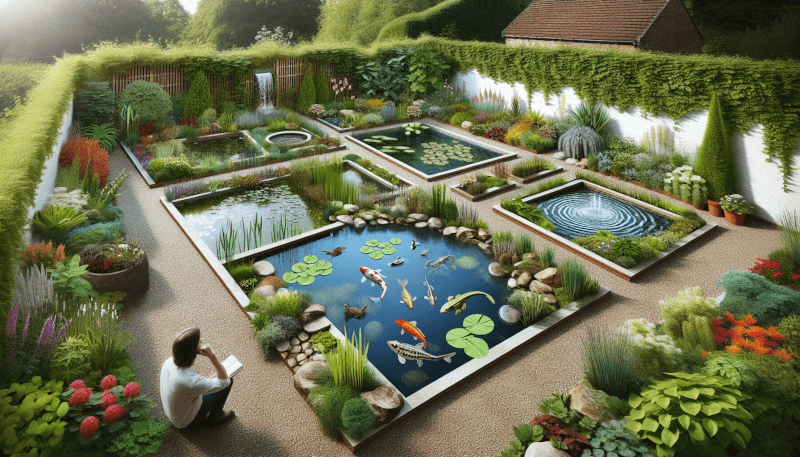
Design the Pond with Different Zones
Creating different zones within your pond is essential for supporting various types of aquatic life and promoting overall biodiversity. Typical zones include shallow areas, plant shelves, and deeper regions. Shallow areas provide a habitat for smaller wildlife, while plant shelves allow for the growth of oxygenating plants. Deeper regions offer a safe haven for larger fish and other aquatic creatures. By designing your pond with different zones, you’ll be fostering a balanced and harmonious ecosystem.
Include Aquatic Plants for Oxygenation
Aquatic plants are not only aesthetically pleasing but also play a crucial role in maintaining water quality and oxygenating the pond. They absorb excess nutrients, discourage the growth of algae, and provide oxygen to both aquatic life and submerged beneficial bacteria. Consider including a variety of submerged, floating, and marginal plants that suit your climate and pond depth. Water lilies, water hyacinths, and duckweed are popular choices that add beauty and functionality to your garden pond.
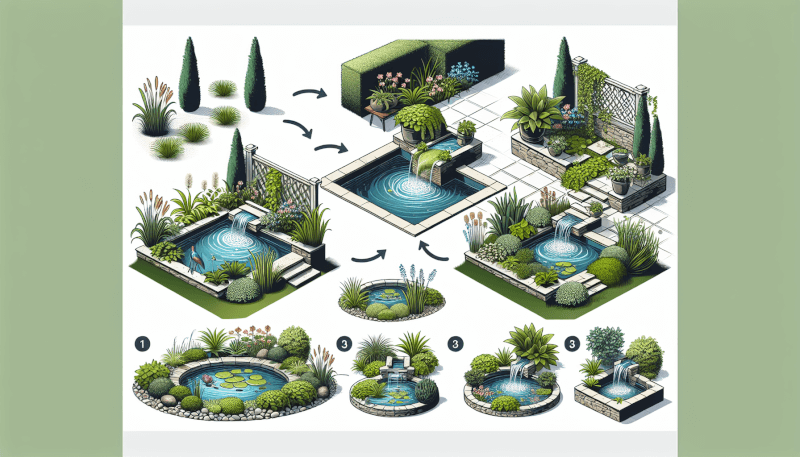
Introduce Fish and Other Aquatic Life
Adding fish and other aquatic life to your pond can enhance its overall appeal and create a dynamic ecosystem. However, it’s essential to choose the right species that are compatible with your pond’s conditions. Research the specific requirements and behaviors of different fish species before making any additions. Avoid overstocking your pond, as this can strain the ecosystem and lead to poor water quality. Provide suitable hiding places and habitats, such as submerged rocks or aquatic plants, to ensure the well-being and safety of your fish and wildlife.
Installing the Pond Liner
Properly installing the pond liner is crucial for preventing leaks and ensuring the long-term durability of your garden pond. Following the correct steps will help you create a watertight seal and maintain the integrity of your pond.
Prepare the Area and Remove Any Obstacles
Before installing the pond liner, it’s important to thoroughly prepare the area and remove any obstacles or debris. Clear the ground of rocks, roots, and any sharp objects that could puncture the liner. Level the area as much as possible to prevent uneven settling and ensure proper water distribution. Additionally, consider installing an underlay or protective layer to further safeguard the liner from potential damage.
Lay Underlay for Protection
An underlay is a protective layer that is placed between the ground and the pond liner. It acts as a cushion, preventing any sharp objects or roots from piercing the liner. Lay the underlay evenly across the prepared area, ensuring complete coverage. This extra layer of protection will help extend the lifespan of your pond liner and minimize the risk of leaks or tears.
Carefully Install the Pond Liner
Once the area is prepared and the underlay is in place, it’s time to install the pond liner. Whether you’re using a pre-formed liner or a flexible liner, it’s crucial to follow the manufacturer’s instructions carefully. Gently lay the liner over the underlay, making sure it covers the entire designated area. Smooth out any wrinkles or folds, and use rocks or other weights to hold the liner in place temporarily. Take your time during this process to ensure a proper fit and alignment.

